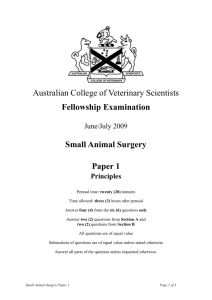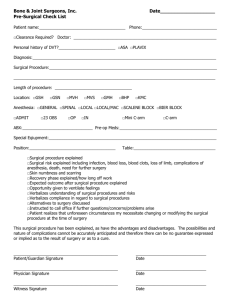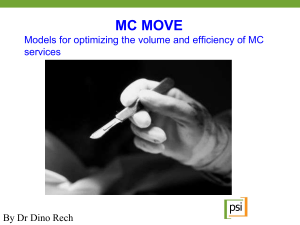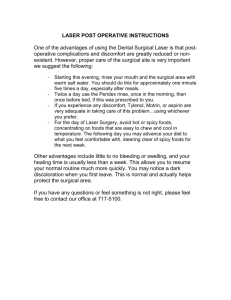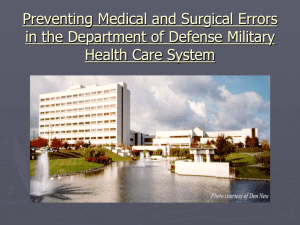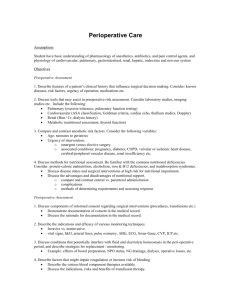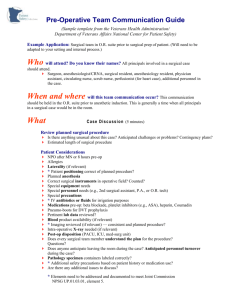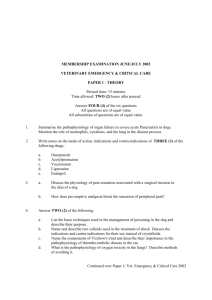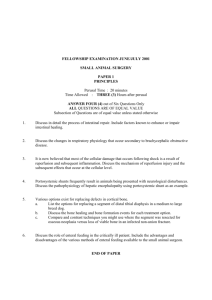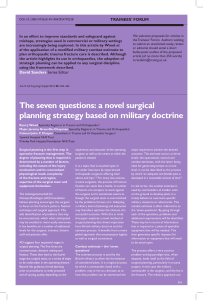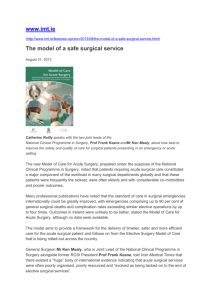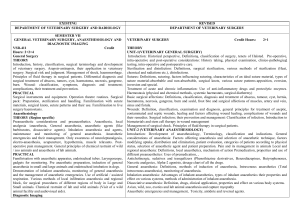Membership examination in Small Animal Surgery
advertisement
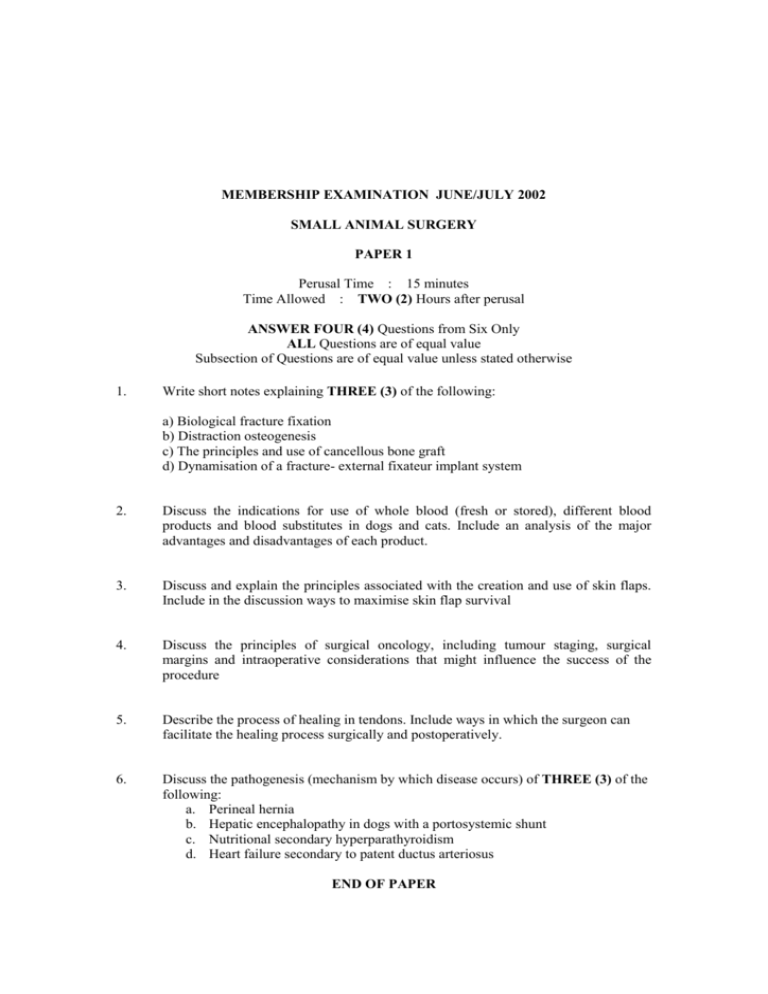
MEMBERSHIP EXAMINATION JUNE/JULY 2002 SMALL ANIMAL SURGERY PAPER 1 Perusal Time : 15 minutes Time Allowed : TWO (2) Hours after perusal ANSWER FOUR (4) Questions from Six Only ALL Questions are of equal value Subsection of Questions are of equal value unless stated otherwise 1. Write short notes explaining THREE (3) of the following: a) Biological fracture fixation b) Distraction osteogenesis c) The principles and use of cancellous bone graft d) Dynamisation of a fracture- external fixateur implant system 2. Discuss the indications for use of whole blood (fresh or stored), different blood products and blood substitutes in dogs and cats. Include an analysis of the major advantages and disadvantages of each product. 3. Discuss and explain the principles associated with the creation and use of skin flaps. Include in the discussion ways to maximise skin flap survival 4. Discuss the principles of surgical oncology, including tumour staging, surgical margins and intraoperative considerations that might influence the success of the procedure 5. Describe the process of healing in tendons. Include ways in which the surgeon can facilitate the healing process surgically and postoperatively. 6. Discuss the pathogenesis (mechanism by which disease occurs) of THREE (3) of the following: a. Perineal hernia b. Hepatic encephalopathy in dogs with a portosystemic shunt c. Nutritional secondary hyperparathyroidism d. Heart failure secondary to patent ductus arteriosus END OF PAPER MEMBERSHIP EXAMINATION JUNE/JULY 2002 SMALL ANIMAL SURGERY PAPER 2 Perusal Time : 15 minutes Time Allowed : TWO (2) Hours after perusal ANSWER FOUR (4) Questions from Six Only ALL Questions are of equal value Subsection of Questions are of equal value unless stated otherwise 1. Discuss a recent advance (within the last 10 years) in small animal surgery. This might include a greater understanding of a surgical disease process, medical management of a previous surgical disease or vice versa, a new surgical technique or exploitation of new technology. 2. Discuss options for management of appendicular osteosarcoma in the dog. Describe prognosis and potential survival times for each management plan 3. Write short notes on the clinical signs, pathogenesis, diagnosis and treatment of the following conditions in the dog a. Brachycephalic airway syndrome b. Laryngeal paralysis c. Tracheal collapse 4. Describe and justify your protocol for pain management in the following cases a. A six month old dog undergoing ovariohysterectomy b. A 10 year old dog undergoing repair of a femoral fracture c. A 16 year old cat undergoing dental extractions 5. A 7 1/2 month old German Shepherd dog has been hit by a car and is presented with a displaced Salter Harris Type 1 physeal fracture of the distal radius. a. Briefly describe surgical management of the fracture b. Discuss the complications that can occur secondary to trauma and surgery to the distal antebrachium c. Discuss how you would manage these complications 6. Discuss your medical and surgical management of a four-year-old Great Dane bitch who presents to you with a suspected gastric-dilation-volvulus. Justify clearly your treatment options with consideration of the pathophysiology of the condition END OF PAPER

